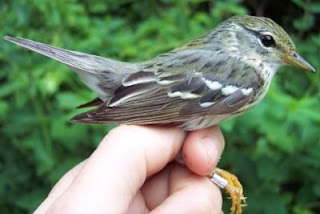
Historically the island was a practice site for aerial military strikes during WWII. However, it has since seen the lighthouse run by a keeper up until 1960’s where it then became automated. The lightkeeper raised rabbits and goats and kept the SW end of the island grazed. When the lighthouse became automated the vegetation was allowed to revert to the Hackberry and Kentucky Coffeetree stand similar to the north and east end of the island.

I have been visiting WSI for 20 years and it hasn’t been until the last 12 that the trees on the SW end began to grow too big and tall for the Black-crowned Night-Herons. From earlier habitat nesting surveys conducted by the state wildlife agency, well before my time on the island, it was recognized that the night-herons used the shorter less than 15 foot trees in which to build their nests. Almost 10 years ago the USFWS and Ohio Division of Wildlife went through the process of public review for managing part of the island for Black-crowned Night-Herons. The species is a federally designated species of concern. After the process was supported, 4 acres have been cut at waist height over the past 9 years in the historical nesting locations on the island. After 2 years there was significant use of the cut area with the birds using the base of the cut stump as a nesting platform. In 2008, I was again pleased to see a larger number of night-herons using the old cut area. The trees in the cut are getting in the 15-20 foot range. It causes the banding crew to use a ladder to reach the nests to band the young.

Kim Kaufman is preparing to band night-herons
at the nest in the cut area.


This is a photo of 4 little whites (Snowy Egrets, Little Blue Herons, Cattle Egrets-are all small white birds). This picture shows 3 Snowy Egrets with a Cattle Egret chick second from the right with the mostly yellow bill and shorter neck. Little Blue Herons are known to nest on the island and all little whites usually nest colonially together making the identification not so easy. However, many years ago while at a regional bird banding meeting in southern state, I met up with a bander who bands a lot of Little Blues. He said little blues have dark gray trailing edge of the secondary feathers. For Cattle Egrets and Snowies, it is a little more difficult. Cattle Egrets have shorter necks and from what I can tell have shorter and stouter legs (fatter legs). At first I thought all of these were Snowies, but in my head when banding something wasn’t quite equal with all of them and I remembered the band number on the one that wasn’t like the others (that is hard to believe I am sure but it is the way it happened). So after looking at the picture and getting a second opinion, the Cattle Egret was weeded out of the mix.
For the past two years the weather and bugs on the island have been tolerable. It has been very hot, humid, with a host of mosquitoes and stable flies to escort you around the island. I probably just jinxed myself.
There is always something to be amazed out in nature. This is the only place I have seen Poison Ivy Trees with trunks 3-4 inches in diameter and free standing. A sight no one believes until they see it. Some think by looking at the plant whey will contract the itch.
Enjoy Summer!















